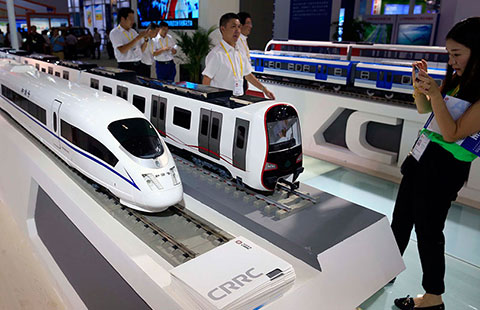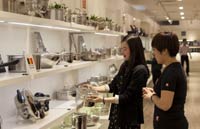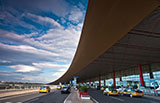Silk Road spirit thrives in Ningxia
By Wang Hao and Wang Huazhong in Yinchuan (China Daily) Updated: 2015-09-09 08:04
Another major point of progress we made is in building channels for opening-up to Arab countries. We have granted the third, fourth and fifth aviation rights fully to the United Arab Emirates, allowing airlines to directly transport passengers and cargo between us or via Ningxia en route to another country. We have opened six international routes and a cargo charter flight to Kazakhstan. We also signed a mutual recognition agreement on standards of Muslim foods with 12 countries, including Saudi Arabia.

In addition, Ningxia has gained approval to build a designated port for imported meat and an exchange for halal products and international bulk commodities. Lastly, we have strengthened cultural exchanges. We have established the School of Arab Studies at Ningxia University and Ningxia Collaborative Innovation Center of Hui Medicine at Ningxia Medical University. We promoted cooperation between Ningxia Normal University and Eastern University, Sri Lanka; and between Beifang University of Nationalities and the Higher Institute for Tourism Studies in Tunisia. The newly established China-Arab University of Science and Technology has started enrollment.
What advantages does Ningxia have?
Li: Ningxia has a long tradition as an important trading hub and is an ethnic minority area. It holds a lot of advantages. The first is the regional advantage. Ningxia plays an important role in the new Eurasian Land Bridge and is located at a pivotal position on the China-Central Asia-West Asia economic corridor. It is suitable for building an airline hub radiating to the northwest, connecting to North China and reaching West Asia and North Africa. Ningxia serves as a gateway to the air corridor connecting China to Arab countries.
The second advantage is related to opening-up. Ningxia has been commissioned to build a pilot economic zone for the opening-up of inland areas, allowing it the priority to carry out new policies.
Third, Ningxia has abundant energy resources. It has witnessed the emerging of Ningdong Energy and Chemical Industry Base centered on the coal-based chemical industry. The five west-to-east gas pipelines traversing Ningxia also mean it has the capacity to process gas and oil from the Middle East and Central Asia.
Fourth, the cultural similarities. Ningxia is the largest inhabited area of the Hui ethnic group, home to 2.32 million Hui people, accounting for one-fifth of the Hui population in China. The customs of the Hui people are similar to those in Muslim countries and regions, which helps a lot in exchanges and cooperation with each other.
- Manufacturing in China needs to get smarter, says Deloitte report
- Data will shape future energy consumption
- Alcoa charts growth plan in line with China
- China taps 3D printing consumer market
- China must boost productivity: WEF expert
- Carbon pricing expected to affect firms' investment
- Uber vows to expand ride-hailing service to more Chinese cities
- Fluctuation in China's forex reserves normal: PBOC

















